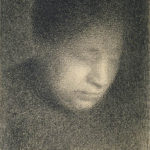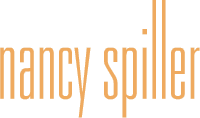January 21, 2021
 While getting ready for my upcoming UCLA Extension Words & Pictures Class (Feb. 20-21), I came across this piece I wrote for Coagula Arts Journal in 2007. Done a couple of years before I designed and first taught W & P, I sense its seeds lurking here:
While getting ready for my upcoming UCLA Extension Words & Pictures Class (Feb. 20-21), I came across this piece I wrote for Coagula Arts Journal in 2007. Done a couple of years before I designed and first taught W & P, I sense its seeds lurking here:
Drawing Conclusions
“Startling moments of awareness,” Agnes Martin wrote, “are never forgotten.”
After immersing myself in the recent MOCA exhibit The Art of Richard Tuttle and subsequently touring the Getty’s Defining Modernity: European Drawings 1800-1900, I realized each show had provided me with at least one startling moment of awareness. The longer these lingered in my mind the more I puzzled over the connections between the two art works created nearly 100 years apart, one from the dawn of modernism and the other from the dimming days of post minimalism.
The first moment came while walking down a corridor in Richard Tuttle’s four decades retrospective at MOCA (through July 30). The show was hung chronologically and the corridor came in the ‘70s range of his work. I slowly became aware that the hall itself was an installation piece, lined in Tuttle’s various “Paper Octagons.” The hall gently revealed to me that thin octagons of paper whose colors varied only slightly with that of the wall on which they were glued, could heighten awareness. The initially banal space became a multi-leveled message of engagement, a post minimalist pose, that art’s pleasures were to be found everywhere if one were open to its discovery.
The great delight in this moment was the sense that something had been there right in front of my eyes before I actually saw it, a presence I felt before it fully registered in my field of vision and consciousness. This felt presence and the moment in which I perceived it was more important than the work itself. The paper octagons have no inherent beauty, not of color, shape, or design, and are barely even there. Their gradual shift in size and the varied lighting within the corridor adds to the experience.
Tuttle considers lighting an important element in his work and the artist supervised the MOCA exhibit’s lighting, a bonus not afforded any of its other venues, including at its originating institution, SFMOMA. As I passed through the hall of octagons into the next gallery it was with a sense that these thin paper presences were a visual poem about the power of revelation. I discovered later in readings that Tuttle, who was a disciple of Martin’s and moved to New Mexico from New York to be close to her, favors the implicit over the explicit in his work.
My awareness was on hyper alert for the rest of the show, which included Tuttle’s notorious bit of rope nailed to the bottom of the gallery wall titled “3rd Rope Piece.” Tuttle’s career in the U.S. was effectively hung by this four inch piece of rope first displayed at his 1975 one man Whitney show when it prompted the powerful New York Times’ critic Hilton Kramer to snipe, that less in this case was not more, it was less. Tuttle went on to find an appreciative audience in Europe. According to New York University fine arts professor Robert Storr, writing in the show’s catalog, his fans are those “Europeans still disposed to metaphysics and loveliness.”
Tuttle’s “radical simplicity,” as Storr calls it, and Minimalism’s quiet message is a welcome whisper in a noisy world. His work engages with a hand made wonkiness and childlike wonder.
Standing at the edge of post minimalism and enjoying the thrilling lack of it all, I wondered if I’d be bored by representational excesses in the current Getty exhibit Defining Modernity: European Drawings 1800-1900 (through September 9). The exhibit explores the beginnings of modernism through works on paper created by artists using new for their day casual mediums such as conte crayon, graphite and watercolor. Would I pine for Tuttle’s four-inch piece of rope when faced with the sometimes sentimental or saccharine musings of Impressionism?
It was hard to hang onto my minimalist thoughts while tramming it up the hill to one of the country’s most well-funded repositories of Western Civilization. Travertine marble rising into a perfect Mediterranean blue sky always makes me want more, not less. The Defining Modernity show is a pleasing, if predictable gathering of works by the likes of Van Gogh, Lautrec, Degas, Cezanne, and Pissarro. But the startling moment of awareness came with the radical simplicity of Georges Seurat’s “Madame Seurat, the Artist’s Mother” (1882-83). The pointillist painter’s gentle pressure of conte crayon on rough surfaced Michallet paper magically creates the mysterious, felt presence of the artist’s mother. Seurat does this without line but using only gradations of tone and the untouched areas of white paper. As her face seems to come out of the darkness into the light, Madame Seurat appears to be looking down at needlework, or a book page, or on the edge of sleep, in an unsentimental yet tender moment that captures her immutable qualities and an eternal presence.
Seurat has three other drawings in the exhibit, a nude, a grove of poplars and a standing female figure poised for a stroll down a Parisian boulevard, all are conte crayon on Michallet paper and largely share the absence of line for tone to convey their subject. They strike me as the polar opposite of the radical complexity of Seurat’s pointillist paintings which broke the visual world into its color components, reconstructing images through the optical illusion of colored dots massing in the viewer’s eye. I thought of this portrait when I later read of Tuttle’s interest in the Buddhist concept of “creation from the void.” Both artists manage in vastly different ways to express the ineffable and evanescent in art.
Seurat was working in a time when art was becoming increasingly accessible to a mass audience. Contemporary art, meanwhile, moves toward the increasingly inaccessible, with much cutting edge work lost on all but the freshest MFA grads or most ravenous aficionados. I was escorted through Tuttle’s exhibit by a MOCA educator in the context of a class and don’t know to what extent I would have “got” the octagonal pieces without the formal introduction. Tuttle’s work isn’t impossible to grasp without this, but appreciation for the richness of his oeuvre is enhanced immeasurably by it.
So, is that a good thing? Still basking in the afterglow of my guided journey through Tuttle, I say it is. Thanks to communication and reproduction methods that brought us modernism and encouraged a mass interest in fine art, an overwhelming flood of images and information has also numbed the masses. Less is more, as Seurat knew, and Tuttle offers us today. While other artists hammer away, these two continue to gently make us aware of the value to be found in the edge of touch and the tip of intention.

Beautiful writing! I’m ordering your books now, too.
XO
Joy
Thank you, Joy!